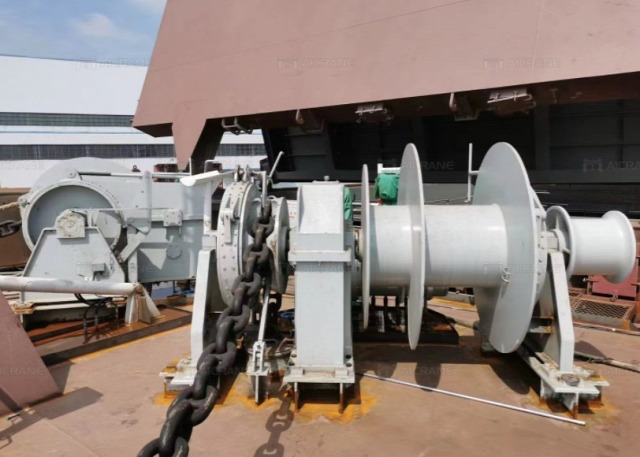Marine winches are crucial components of maritime operations, serving various purposes such as anchor handling, mooring, towing, and cargo handling. These powerful devices are subjected to harsh marine environments, heavy loads, and continuous use, making them susceptible to wear and damage over time. To ensure the smooth functioning and safety of marine winches, regular maintenance, repair, and timely replacement of worn-out parts are essential. This article provides comprehensive guidelines for the replacement and repair of marine winches, helping maritime professionals maintain the reliability and longevity of these critical equipment.

Regular Inspection and Maintenance
Before delving into repair or replacement procedures, it is imperative to establish a regular inspection and maintenance schedule for marine winches. Scheduled maintenance allows for the early detection of potential issues, reducing the risk of severe damage and downtime during operations.
Identifying Signs of Wear and Damage
Effective maintenance starts with identifying signs of wear and damage.
Common indications include:
- Fraying or kinking of cables/wire ropes
- Unusual noises during operation
- Excessive vibration or wobbling
- Leaks in hydraulic systems
- Irregularities in brake performance
- Overheating of motor or gearbox
Essential Safety Precautions
Before proceeding with any repair or replacement work on a marine winch system, ensure that all safety precautions are followed. This includes shutting down the winch, isolating power sources, and properly securing the winch to prevent unexpected movement.
Repair Procedures
a. Cable/Wire Rope Replacement:
Measure and cut the new cable/wire rope to the appropriate length.
Attach the new cable to the winch drum securely, ensuring proper winding.
Tension and spool the cable/wire rope evenly, avoiding kinks and overlaps.
Lubricate the cable to reduce friction and wear.
b. Brake System Repair:
Inspect brake pads or discs for signs of wear and replace if necessary.
Adjust brake tension to ensure proper stopping power.
Verify the brake's synchronization with winch operations.
c. Gearbox Repair:
Drain and replace the gearbox lubricant at recommended intervals.
Inspect gears for signs of damage, and replace if teeth are worn or broken.
Reassemble the gearbox carefully, following the manufacturer's guidelines.
d. Motor Replacement:
- Disconnect power sources and wiring from the old motor.
- Install the new motor, ensuring proper alignment and connections.
- Test the motor's functionality before re-engaging the winch.
Replacement of Key Components
Certain components of marine winches may wear out over time and require replacement, including bearings, seals, and bushings. Always use genuine parts from the winch manufacturer or approved suppliers to maintain optimal performance and safety.
Professional Assistance
While minor repairs can be carried out by experienced crew members, complex repairs or replacements should be left to certified marine technicians or specialists. Professional expertise ensures that repairs are done correctly and adhering to industry standards.
Conclusion
Regular inspection, maintenance, and timely replacement of worn-out parts are integral to ensuring the safe and efficient operation of marine winches. Following proper repair guidelines and employing safety measures are essential in prolonging the lifespan and reliability of these critical devices. By maintaining marine winches diligently, maritime operators can enhance operational efficiency, reduce downtime, and most importantly, prioritize the safety of their crew and vessels during all marine operations.

